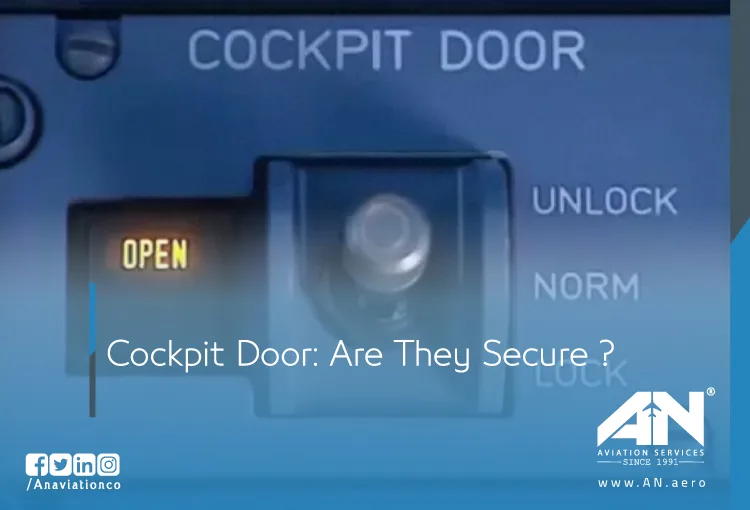
After the events of September 11, 2001, (commonly known as 911). Changes were made to cockpit security in order to make hijackings more difficult. The US Federal Aviation Administration recommends that doors be strong enough to withstand a grenade blast. Also, they are usually left locked for the duration of the flight.
How safe are cockpit doors?
Extremely secure — so secure that they can withstand gunfire and even small grenades. Cockpit security systems are designed to allow a pilot access to the cockpit. However, access can be purposefully denied from within the cockpit. In the event that whoever is in the cockpit becomes incapacitated, a touchpad will allow cabin crew who know the code to enter.
In “normal” mode, the cockpit is locked but can be accessed by touchpad after a 30-second delay if the cabin crew receives no response from inside.
A pilot would use “Unlocked” mode to open the door for a colleague returning from the bathroom.
“Locked” indicates that the locking mechanism disregards the touchpad entry code and remains locked for five minutes (it can be repeated). It’s simple to see how this could be used to prevent hijackers from entering the cockpit after obtaining the code from the cabin crew.
Some planes may have a screen that displays who is standing outside the cockpit door for the pilots to see.
How do flight crew normally open a cockpit door?
Since the incidents in 911, pilots and flight attendants no longer have keys to open the cockpit door, which remains locked during flight.
Access is granted via a keypad found outside the cockpit door. The cockpit buzzer then sounds, and the pilot or pilots at the controls can choose whether to allow entry in the cockpit.
Is it possible to open a cockpit door from the outside?
Keypad
The cockpit door automatically locks, but a keypad outside allows a flight attendant to insert a security code to gain access. A buzzer sounds, and the pilots must switch the door control inside the cockpit to “unlock” to release the door after verifying the crew member through a peephole or video surveillance.
If the pilots become incapacitated, a flight attendant can use a special code to activate an emergency access entry system. It sends a 30-second warning to the cockpit, complete with sounds and lights, that the door will be opened soon. After that, you have five seconds to enter.
Override mechanism
Pilots have the option of keeping the door locked even if the emergency code is activated if they have any concerns. The toggle switch for the door control has three positions: unlock, normal, and lock.
Investigators believe the co-pilot refused to let the pilot into the cockpit by keeping the switch in the locked position in the Germanwings case.
Escape panel
In the event of an emergency or a jammed cockpit door, Some airplane models have escape hatches built into the lower part of the door, allowing the pilot to remove the panel and squeeze through.
The panel, however, can only be removed from the inside of the flight deck and not from the outside.
Why is the cockpit door remain opened during the boarding and close during the flight
Because of the number of people who need to enter and exit the flight deck before departure, cockpit doors must remain open. For instance, the First Officer will always leave to conduct an external walk-around preflight before returning.
Additionally, keeping the door open allows the Captain to monitor the boarding procedure. This includes technicians, fueling personnel, and those in charge of cleaning and catering to the aircraft. And many ground personnel are expected to maintain constant contact with the pilot.

